How to prepare your Dog for your Baby's arrival
Congratulations on the joyous occasion of becoming proud parents! If you own a pet dog you need to also prepare him/her for the arrival of the newborn. You can avoid stress and prepare your dog for the big change by following some tips before and after childbirth; your pet will then welcome the baby into the growing family.
Pet dogs need time to adjust to changes in the household and are sensitive to the arrival or departure of individuals in their pack, with your pet dog’s pack being the family he/she is a member of. Also they need time to socialize with new people and situations with changes triggering behavioral changes. We need to be calm and do our best to shield our pet dog from stress and make it easy for him/her to deviate from a routine, security and calm.
Some tips before childbirth that would make the transition easy:
Ensure a smooth and easy transition by preparing your pet dog well in advance. Set up the nursery and arrange the furniture in all rooms as required well in advance to help the pet coup up with the big change of the baby’s homecoming.

Begin with obedience training for your pet dog, teaching him/her commands like "sit", "stay" and "down"; the pet would then consider you as the leader of the pack. This will make it easy for the pet to accept the baby of the family leader and not challenge it; all this is to be done with consistency, kindness and positive methods.
Get your pet dog used to sounds like crying, cooing, screaming, gurgling, laughing by playing tape and CDs of baby sounds; you could also desensitize pet dogs to movement of swings and rocking by setting automatic rocking swing far in advance for hours or using CDs of rocking a swaddled doll. This could be alternated with practicing obedience commands that would help the dog to be relaxed in the presence of the tape and the doll.
Prepare the pet for the arrival of the new baby with baby smells like baby powders, baby lotions, diapers and baby blankets, carrying around a baby doll and engaging in baby care activities like changing the diaper and bathing in front of him/her. Train your dog to sit as you hold the doll and let him/her sniff when calm and under control. Get your pet used to the baby’s name (if you have selected one) by talking to your pet about the baby. Also practice walking your dog with an empty carriage or stroller to get him/her used to behaving on future walks with the baby. Introduce your dog to your baby’s room.
Make it a habit to regularly praise your pet for good, calm behavior. You could also reward him/her with gentle words, praise, treats and caresses for desirable behavior.

Spend time training your pet dog everyday; as the pregnancy advances ensure your pet gets out of the habit of jumping even in a friendly way to avoid further complications. Make your overly dependent dog that could compete with the baby for attention independent with obedience training and seeking behavioral advice.
Use an effective barrier to keep your pet dog from the baby’s room and other off-limit areas by using gates and jumpers. However ensure you have a special place for pets only where your pet dog could retreat when he/she needs a break.
Get your pet used to having less attention each day; however ensure the needs of socialization and exercise are met by spending quality time with your pet.
Fix up an appointment with your vet to make sure your pet dog is healthy, free of parasites and has the necessary vaccinations. It is also advisable to spay or neuter your pet as then he/she would then have fewer health problems of the reproductive systems, would not bite and would be calm. A consultation with a veterinarian and pediatrician is called for when it is thought that the interaction between the newborn and the pet would not be comfortable.
Some tips to be followed after birth of baby:
Just before taking the baby home from the hospital you could arrange for someone to take something with a baby scent like a blanket or a towel home for the pet dog to smell and investigate. Don’t play tug of war with the item; you could let the dog sleep with it if he/she is calm and comfortable.
The pet would be eager to welcome you and receive some attention when you return from the hospital; give the baby to someone else and give your pet a warm and calm welcome and offer some treats to distract the pet. Ensure you spend some quality time with the pet however tired you may be and do not panic or yell at the pet dog as you do not want your pet to associate the newborn with nervous feelings or alarm.
Next as you introduce your pet to the baby, ensure a responsible adult holds the dog on a short leash and keeps the dog in a controlled sit-stay or down-stay across the room, while another is holding the newborn. Make it a positive experience by rewarding the pet with treats for appropriate behavior; always supervise the interaction and prevent anxiety to the pet and injury to the baby by not forcing the pet to get near the baby.
You could continue getting the dog closer to the newborn over several days as long as the dog is under control and calm; speaking and acting in a relaxed and reassuring way would enable you to gradually let the dog off the leash with caution in the presence of 2 adults. In case you doubt the dog’s behavior towards the baby, it would help to use a muzzle during the introduction and training sessions.
Ensure that you spend one-on-one quality time with the pet by giving him/her attention so that the pet feels relaxed and does not feel he/she has to compete with the baby for attention. Use this time to work on obedience commands, grooming, petting and massaging your dog; with proper training, supervision and adjustments the pet will soon be ready to live safely and happily with the baby in the family.

It is unkind and counterproductive to banish the dog outside while you care for the baby as the pet depends on you to maintain socialization with the newborn and teach them good behavior. This could stress the pet and contribute to undesirable behavior; it would instead help to place the pet dog in pleasant and familiar places at home as you care for the baby.
Praise the dog in the presence of the baby and also offer treats to the pet when you are engaged in baby care activities like changing the diaper or feeding the baby; this will make the pet associate the baby with pleasant, calm and good things.
Keep the nails of your pet dog trimmed and stop your dog from jumping on the baby; smooth and trim nails help in case you lose control. Discourage your pet from jumping on the baby's crib and changing table by applying double-stick tape to the furniture.
Some pets may still have problems settling down with the newborn, be patient in getting the dog used to the new infant; if it still doesn’t work it is well worth the investment to consult a behavioral trainer for guidance. It is also to be understood that if your pet shows predatory behavior toward small animals, food or possession guarding, or any other aggressive tendencies, special attention and management is required.
If you have engaged a babysitter, it would help to ask her to keep the child and dog separate; it would be advisable to engage a babysitter who is mature and has some experience with pet dogs.
I am sure you would have successfully prepared your pet dog for the baby.
Image Courtesy: Google
Take the next step toward your goals
Share your requirement and find the best care providers in your area
-
Looking for a caretaker’s job? Build your profile and get in touch with families in your vicinity.
-
Discover nannies, babysitters, cooks, housekeepers, pet sitters, and elder care under one roof.
-
Get all the support you need to run a successful care center.
-
Search for appropriate centers near you depending on your needs.
Care Corner Insights: Blog Library

Deep Cleaning Your House: Room-by-Room Checklist for a Thorough Clean
A sparkling clean home isn’t just about looks—it’s about health, comfort, and peace of mind. Whether you’re prepping for a festival, hosting guests, or just tired of the clutter, a deep clean can transform your space. But where do you start? Here’s a
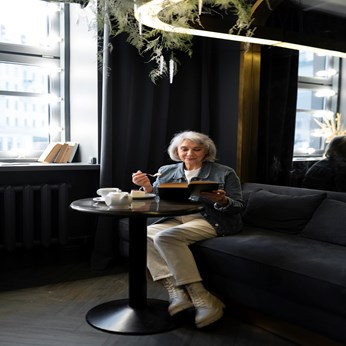
What are Senior Apartments? Experts Explain Independent Living for Older Adults
As we age, our needs and lifestyles evolve—but one thing remains constant: the desire for independence. Senior apartments are designed precisely with this in mind, offering older adults a living arrangement that balances freedom with comfort, safety,
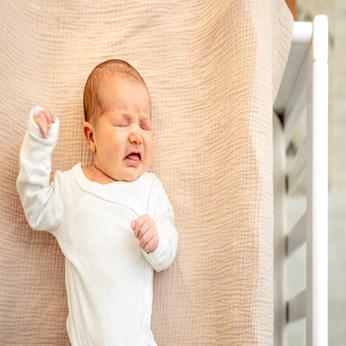
Baby Sleep Problems: What is Sleep Regression and How to Handle It
If you’re a parent, you know that baby sleep is one of the greatest mysteries of life. One day your little one is snoozing like an angel, and the next day they’re suddenly waking up every hour, fussing, or refusing to nap. Before you panic, there’s a
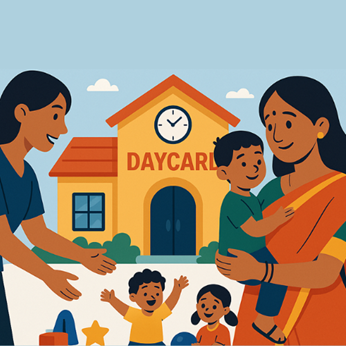
Daycare Admissions in Cary, NC for New NRI Families: Documents, Health Records, and Start Dates
Moving to a new country is exciting but also comes with many responsibilities—especially when it comes to finding the right daycare for your little one. For new NRI (Non-Resident Indian) families settling in Cary, NC, understanding the daycare

Overnight Babysitters in Bellevue, WA for Business-Travelling NRI Parents: Safety & Policies
For many NRI parents living in Bellevue, WA, frequent business trips are a reality. While traveling, one of the biggest concerns is ensuring your children are safe, cared for, and emotionally supported during overnight stays. Overnight babysitters ca

Indian Home-Style Cooks in Queens, NY: Tiffin-Style Weekly Meal Prep from Your Kitchen
Queens, NY, is home to one of the most diverse food cultures in the country, and Indian cuisine holds a special place among families looking for authentic, comforting meals. While restaurant takeout is convenient, nothing compares to the taste and nu
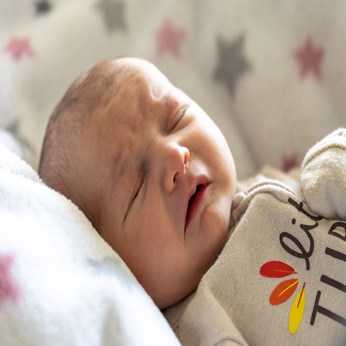
Baby Sleep Problems: What is Sleep Regression and How to Handle It
If you’re a parent, you know that baby sleep is one of the greatest mysteries of life. One day your little one is snoozing like an angel, and the next day they’re suddenly waking up every hour, fussing, or refusing to nap. Before you panic, there’s a

What is Validation Therapy? A New Approach to Dementia Care
Caring for loved ones with dementia is one of the most emotionally challenging journeys a family can face. Traditional methods often focus on correcting memory lapses or redirecting confused thoughts—but that can sometimes lead to frustration, stress
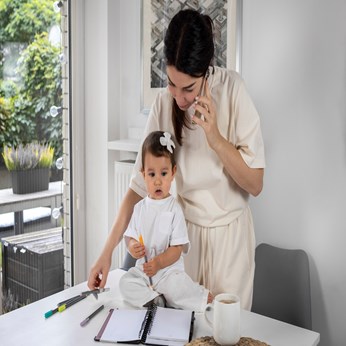
What is a Part-Time Nanny and Do You Need One
Parenting is a beautiful journey, but let’s be honest—it can also be exhausting! Between work deadlines, household chores, and family responsibilities, sometimes there just aren’t enough hours in a day. That’s where part-time nannies step in, offerin

Part-Time Housekeeper Hiring in Alpharetta, GA: Weekly Schedules, Pricing, and Must-Do Tasks
Keeping a home spotless while balancing work, family, and personal commitments can be overwhelming. For families and professionals in Alpharetta, GA, hiring a part-time housekeeper is one of the most practical solutions. Whether you need help once a